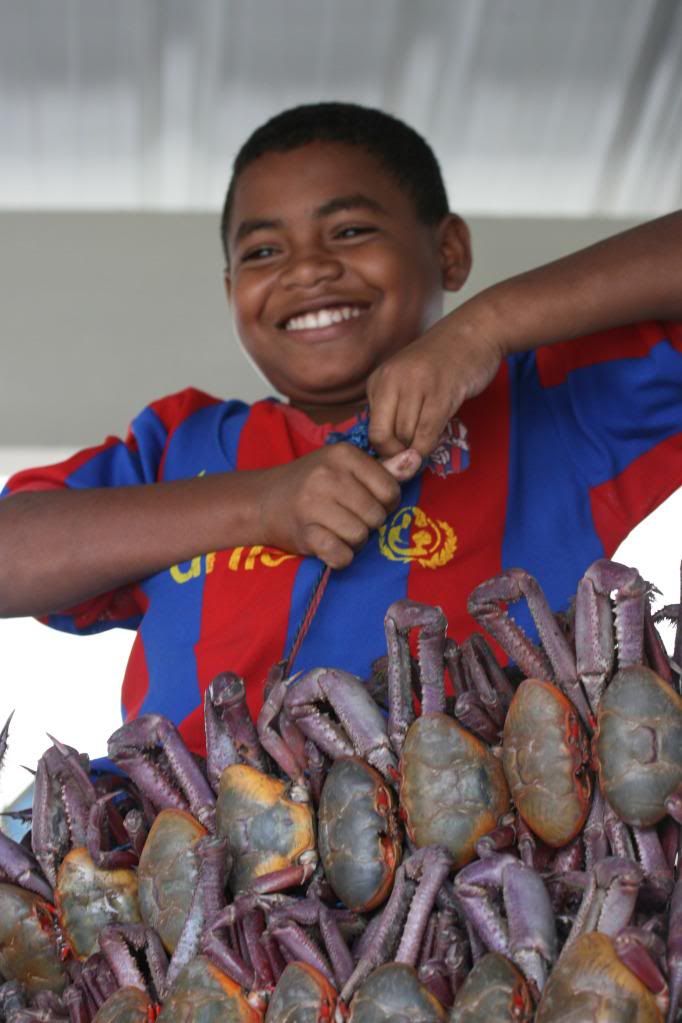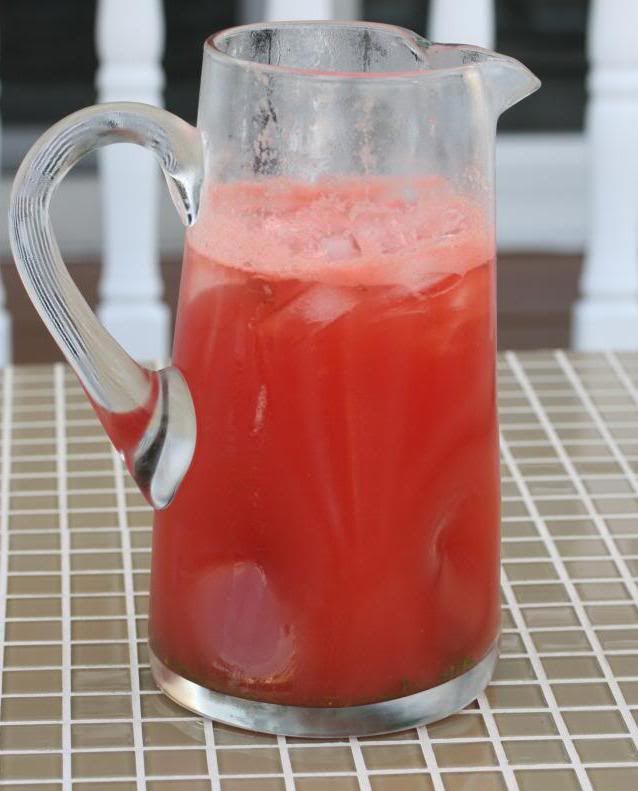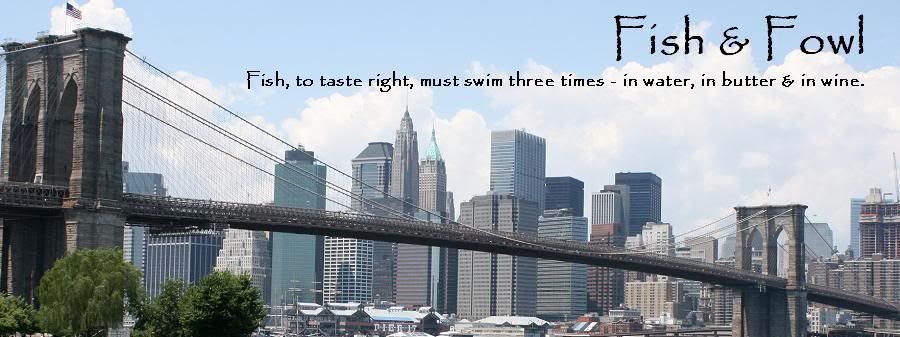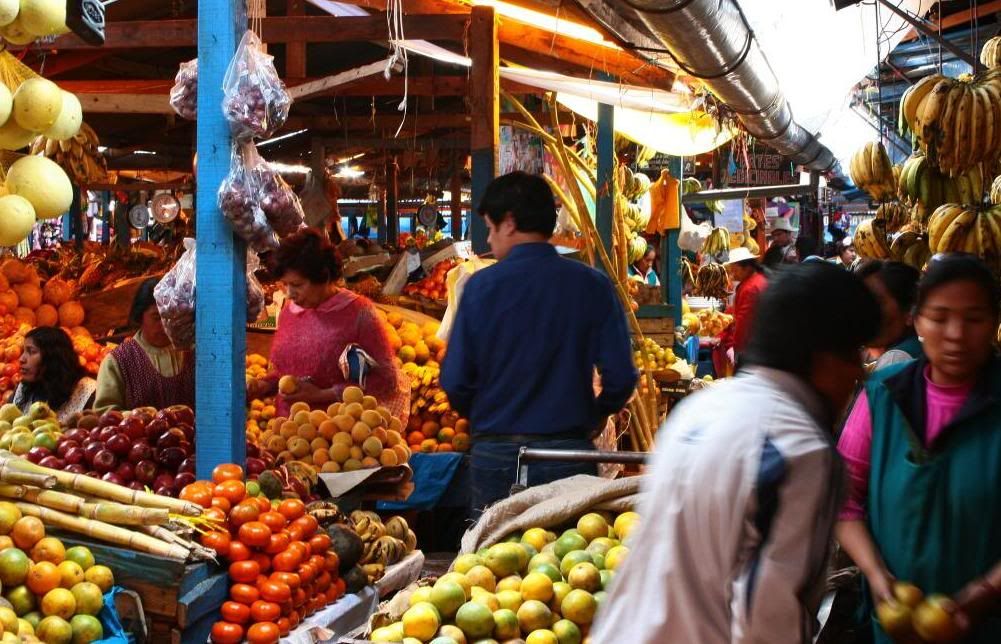Our leadership status has convinced many that America possesses all the answers, and some that it is our responsibility to spread the American way of life globally. While my personal experience has verified that this is not entirely untrue, and many great American ideas are being internationally adapted, to the great benefit of local societies, there is also a great deal that we can learn from developing nations. As many of these nations are facing pressing threats of poverty, violence, and corruption on a daily basis, and have utilized new and innovating ideas to combat these impediments to progress.
When traveling, local markets provide some of the best insight into a particular society and a true view into everyday life. Awash with local fruits, vegetables, fishes, meats, and most importantly street vendors, markets are my second home. Luckily our trip provided us with the opportunity to visit two such markets, one centrally located in Cusco, Peru, and the other, an open air seafood market in Guayaquil, Ecuador. The markets themselves, appearing indicative of the current state of affairs in the two cities, could not have been more different.
Cusco, a city riddled with tourists, had a uniquely local market, devoid of outsiders, filled with produce, glass, textiles, spices, and a number of services. Sopa, the street food of the day, was offered at numerous locales in variety of flavors. The small shop in which we stopped for breakfast served a large bowl of sopa de cordero (lamb soup), which despite being a bit salty, was a pretty good breakfast for three soles, and only a pinch more expensive than the ham empanada I grabbed for 2 ½ soles. All in all it was a bustling market, filled with people, dirt, and any product you could imagine, from oranges to Nike backpacks. However, it was difficult to remove yourself from the abject poverty that surrounded you. One shop owner was unable to make change for a five sole coin….a little more than a dollar seventy five American.
 The fish market in Guayaquil was in stark contrast to what we had witnessed in Peru. As a model of urban renewal, the city had undergone a decade of infrastructure development, and possessed an economy independent of tourism. Arriving on a small guided tour, we were greeted by welcoming, friendly shop owners, insistent to have their photo taken and incredibly proud of the product they were selling. Young and old were grabbing their wares and widening their smiles in the hopes of being caught in the camera lens. Unfortunately, as I would be unable to cook in the hotel, I left empty handed. But I can promise that walking through a clean, odorless, open air fish market, filled with cockles, squid, butterfish, tuna, and crabs, straight from that morning’s catch, left me with a pretty serious craving. Luckily the exceedingly lovely family of the bride, following the wedding, invited us to a cebicheria, quenching my thirst for creatures from the sea.
The fish market in Guayaquil was in stark contrast to what we had witnessed in Peru. As a model of urban renewal, the city had undergone a decade of infrastructure development, and possessed an economy independent of tourism. Arriving on a small guided tour, we were greeted by welcoming, friendly shop owners, insistent to have their photo taken and incredibly proud of the product they were selling. Young and old were grabbing their wares and widening their smiles in the hopes of being caught in the camera lens. Unfortunately, as I would be unable to cook in the hotel, I left empty handed. But I can promise that walking through a clean, odorless, open air fish market, filled with cockles, squid, butterfish, tuna, and crabs, straight from that morning’s catch, left me with a pretty serious craving. Luckily the exceedingly lovely family of the bride, following the wedding, invited us to a cebicheria, quenching my thirst for creatures from the sea.Returning home in time for the fourth, I purchased a US grown watermelon, what could be more summer than that? And in true American fashion, I liquefied and spiked the little bastard. It’s truly refreshing for these oppressively hot summer days.
 Watermelon Punch
Watermelon Punch4c watermelon juice (about 1/3 of a melon)
3c ginger ale
Juice of 1 large lemon
1c mint leaves
2tbsp sugar
1 ½ - 2c vodka (add vodka to taste)
Cut the seedless watermelon into large chunks and liquefy in a blender or food processor. Unless you like pulp, strain. Muddle the mint with the sugar in a large glass and add to the pitcher. Add the remaining ingredients, including the vodka to taste. Fill the remainder of the pitcher with ice and serve.


No comments:
Post a Comment